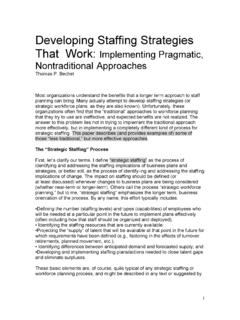Transcription of Commonwealth of Kentucky Workforce Planning …
1 Commonwealth of Kentucky Workforce Planning Guide Personnel Cabinet Office of Diversity, Equality & Training 2 Office of Diversity, Equality & Training 3 Table of Contents Overview 5 What is Workforce Planning ? 5 Why is Workforce Planning Necessary? 5 What are the Benefits of a Workforce Plan? 6 What is the Role of the Office for Employee and Organizational Development? 6 What is the Agency s Role in Workforce Planning ? 6 Kentucky s Workforce Planning Model 7 Step 1 Set Strategic Direction 8 Step 2 Conduct Workforce Analysis 9 Phase 1 Workforce Demand Forecast 10 Phase 2 Workforce Supply Analysis 11 Step 3 Conduct Gap Analysis 12 Step 4 Develop Strategies 13 Step 5 Implement Strategies 15 Step 6 Monitor, Evaluate, and Revise 16 Agency Workforce Plan Templates 17 Office of Diversity, Equality & Training 4 Office of Diversity, Equality & Training 5 WHAT IS Workforce Planning ?
2 Workforce Planning is the systematic process for identifying and addressing the gaps between the Workforce of today and the human resource needs of tomorrow. It provides the foundation for strategic human resource decisions. As with any Planning , this process draws together program management, human resources, budgeting, and program staff. In developing a Workforce plan, your organization should systematically address the issues driving change. Workforce Planning addresses staffing needs by: Linking human resources Planning with strategic Planning assuring that human resources are aligned with the agency s strategic goals and objectives; Understanding how the agency s mission will change over time; Understanding how changes in mission will affect job requirements; Understanding how the Workforce is changing in terms of demographics, skills, interests, and performance; Understanding how well the current Workforce is prepared for future job requirements and identifying potential gaps in capability; Developing strategies, including recruitment, retention, training, etc.
3 , to address staffing needs, based on the gaps. Workforce Planning requires strong management leadership and cooperative, supportive efforts of staff in several functional areas. Strategic Planning , budgeting, and human resources staff are key players in Workforce Planning . Human resources staff provide tools for identifying needed competencies and for building the future Workforce through strategic recruitment, training, development, and retention techniques. WHY IS Workforce Planning NECESSARY? Nationwide statistics from the United States Office of Personnel Management reveal that of the Workforce , of managers and supervisors, and about 65% of the Senior Executives are eligible to retire in the next five years. Workforce Planning provides managers with a strategic basis for making human resource decisions. It allows managers to anticipate change rather than being surprised by events, and it provides strategic methods for addressing present and anticipated Workforce issues.
4 Office of Diversity, Equality & Training 6 WHAT ARE THE BENEFITS OF A Workforce PLAN? Allows Kentucky to bridge knowledge gaps caused by attrition Allows organizations to achieve maximum effectiveness Provides needed human resource information to effectively manage programs and projects WHAT IS THE ROLE OF THE OFFICE OF DIVERSITY, EQUALITY & TRAINING (ODET)? ODET will play three roles in facilitating this initiative: Guidelines ODET will develop research-based guidelines for agencies to use in order to compile a Workforce plan. Deliverable Tools ODET will develop tools that will assist agencies in obtaining and organizing the information necessary to develop a Workforce plan. Support ODET will provide consultation, deploy a Workforce Planning survey and disseminate its results, and facilitate workshops to assist agencies in the developing their Workforce plans. WHAT IS THE AGENCY S ROLE IN Workforce Planning ?
5 Assign staff members to be part of an internal Workforce Planning Team. Establish a Workforce Planning contact person. Encourage participation in ODET facilitated workshops, conferences, surveys, and other events related to Workforce Planning . The Office of Diversity, Equality & Training has developed this Workforce Planning Guide and templates to assist agencies with their Workforce Planning processes and in developing their Workforce plans. The Workforce Planning model and processes described in this guide are derived from Workforce Planning in other states and federal agencies and an extensive review of Workforce Planning research and literature. Office of Diversity, Equality & Training 7 Kentucky S Workforce Planning MODEL The Office of Diversity, Equality & Training developed Kentucky s Workforce Planning Model as an example for state agencies to follow (see figure below). This model was derived from various state and federal organizations throughout the United States.
6 Each state agency has unique operating cultures and business needs; therefore, this model and its associated considerations and strategies can be modified by each agency to address its unique needs. This Planning guide and associated templates have been developed to assist agencies in developing their Workforce plan. Set Strategic DirectionConduct Workforce AnalysisConduct Gap Analysis Implement StrategiesMonitor, Evaluate, ReviseDevelop Strategies Office of Diversity, Equality & Training 8 Workforce Planning MODEL Step 1 Set Strategic Direction Strategic Planning sets organizational direction and defines agency goals and measurable objectives. These goals and objectives not only provide the basis for determining necessary financial resources, but they also provide the basis for determining Workforce needs. Workforce Planning complements and is a follow-up to strategic Planning . A Workforce plan translates strategy into action to identify Workforce staffing and training needs.
7 Agency strategic plans are required to be submitted with each biennial budget request in accordance with KRS KRS outlines the components required of the strategic plan. An agency s vision, mission, and measurable goals and objectives drive the identification of future functional requirements. In turn, those requirements drive the analysis and elements of the Workforce plan. When identifying future functional requirements, focus on function, not on the people needed to do the job. The overarching question is: What key functions need to be performed in order to accomplish the goals and objectives set out in the strategic plan? This may include many of the organization s current functions, in addition to forecasting important future functions and activities. What is the appropriate organizational level for developing a Workforce plan? There is no single answer. A useful guideline in determining Planning levels is to ensure the outcomes of Workforce Planning will relate directly to the organization s strategic plan.
8 The level of analysis should be at least equivalent to that of the strategic plan, and preferably carried out at the program-level basis where the front-line effects will be felt. Set Strategic Direction Office of Diversity, Equality & Training 9 Workforce Planning MODEL Step 2 - Conduct Workforce Analysis The key element in the Workforce Planning process is an analysis of Workforce data. It considers information such as job classifications, skills, experience, retirement eligibility, diversity, turnover rates, education, and trend data. This step reviews the work that will be required for an agency to achieve its goals and objectives, the knowledge and skill sets, and the staffing levels necessary to perform that work. There are two phases in conducting the Workforce analysis: The Workforce Demand forecast identifies the future Workforce needed to carry out the agency s mission. The focus of this step should be on the work the agency must perform and on the staff needed to perform that work.
9 In this step, identify the current work functions being performed, future or new functions that will need to be performed, and how the work will be performed in order to achieve the goals of your strategic plan. You may also identify current functions which will not be necessary in the future due to changes in technology or responsibility in providing specific services. The Workforce Supply analysis focuses on an agency s existing and future Workforce supply. It answers the question, What is the existing profile of the current Workforce , and what does it need to be in the future to accomplish the agency s goals and objectives? Once the work functions that must be performed have been determined, identify the staffing, or Workforce , needed to perform those functions. Focus on defining the competencies ( , knowledge, skills, and abilities) staff must possess to successfully perform the work. Determine the number of staff with these competencies that your agency will need to accomplish its functions.
10 Conduct Workforce Analysis Office of Diversity, Equality & Training 10 Workforce Planning MODEL Step 2 - Conduct Workforce Analysis Phase 1 Workforce Demand Forecast The Demand Forecast deals with the Workforce that will be needed to achieve the agency s strategic goals and objectives. Information derived from Step 1 Set Strategic Direction forms the basis for this analysis. In this step, a staffing assessment against future functional requirements is conducted. The result is a forecast of the type of competencies, numbers, and locations of employees needed in the future. This makes up the future Workforce profile. An important part of the demand analysis process is examining not only what work the agency will do in the future, but how that work will be performed. Some possible considerations include: How will jobs and workload change as a result of technological advancements, economic, social, and political conditions?
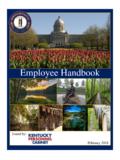
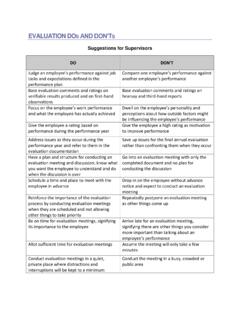
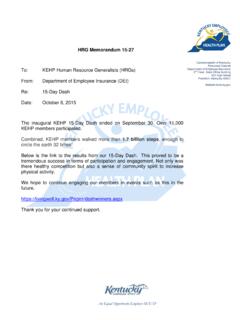
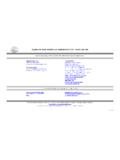
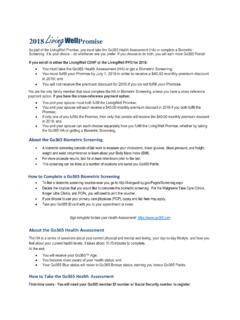
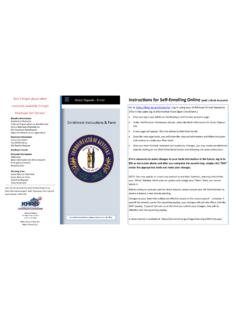
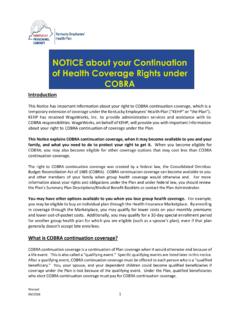
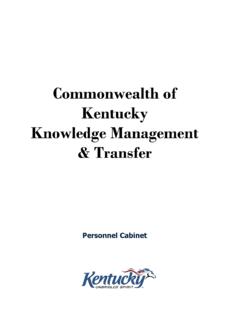
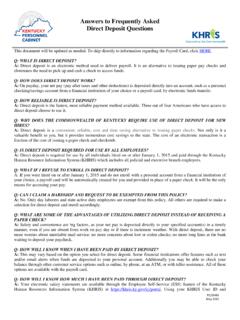



![[STATEWIDE WORKFORCE PLANNING REPORT] - …](/cache/preview/2/5/c/7/4/9/a/b/thumb-25c749abbe1cc101cd3a7a5ff6cf6fe0.jpg)


